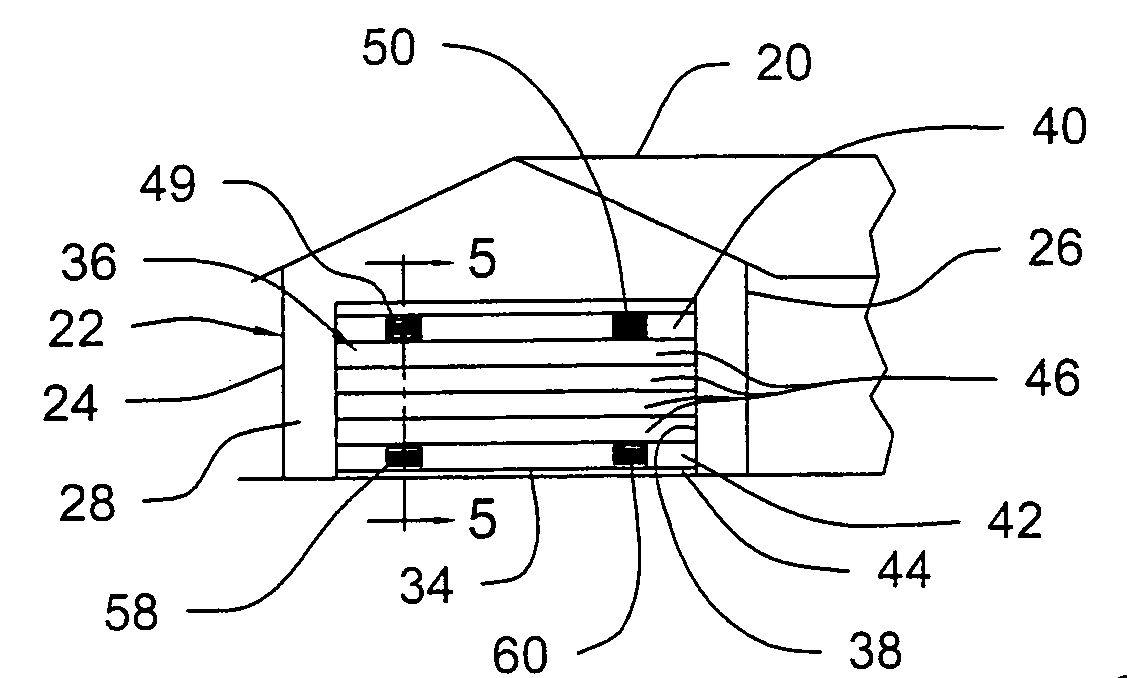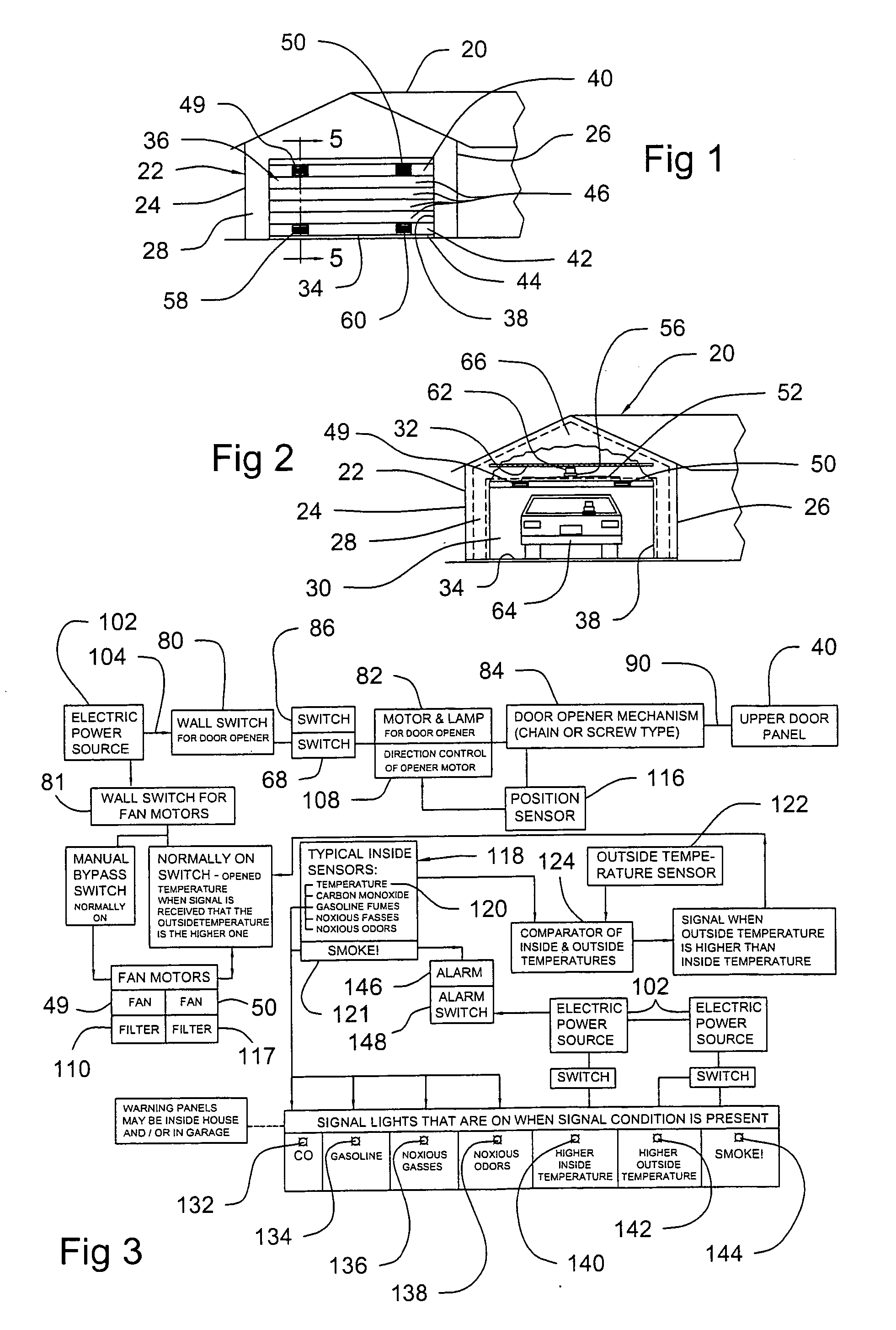Ventilating system for garages and similar enclosed spaces
a technology for garages and enclosed spaces, applied in ventilation systems, lighting and heating apparatus, heating types, etc., can solve problems such as accidents and/or injuries, and achieve the effect of improving interior cooling
- Summary
- Abstract
- Description
- Claims
- Application Information
AI Technical Summary
Benefits of technology
Problems solved by technology
Method used
Image
Examples
Embodiment Construction
[0033]The primary usage of the invention is to remove sufficient warm or hot air from the enclosed interior space such as a garage, and replace it with cooler outside air so as to keep the interior cooler. The interior space may also be subject to vapors that make it uncomfortable to be in an enclosure, and may even be subject, by way of example but not of limitation, to dangerous gases such as carbon monoxide; fuel vapors such as gasoline fumes; other types of fumes that are released at times when certain activities, such as mixing paint, cleaning parts with various cleaning fluids, etc., are taking place in the enclosed space. Therefore, an at least equally important usage of the invention is to remove such vapors and gases.
[0034]While the invention is shown as being installed in a garage that is attached to a residential house, it is also very useful with free-standing garages or other storage buildings. Therefore, the use of the term “garage” in the specification and the claims ...
PUM
 Login to View More
Login to View More Abstract
Description
Claims
Application Information
 Login to View More
Login to View More - R&D
- Intellectual Property
- Life Sciences
- Materials
- Tech Scout
- Unparalleled Data Quality
- Higher Quality Content
- 60% Fewer Hallucinations
Browse by: Latest US Patents, China's latest patents, Technical Efficacy Thesaurus, Application Domain, Technology Topic, Popular Technical Reports.
© 2025 PatSnap. All rights reserved.Legal|Privacy policy|Modern Slavery Act Transparency Statement|Sitemap|About US| Contact US: help@patsnap.com



